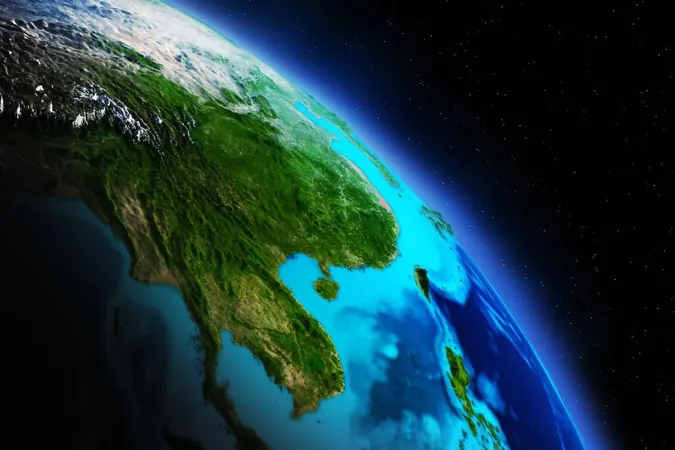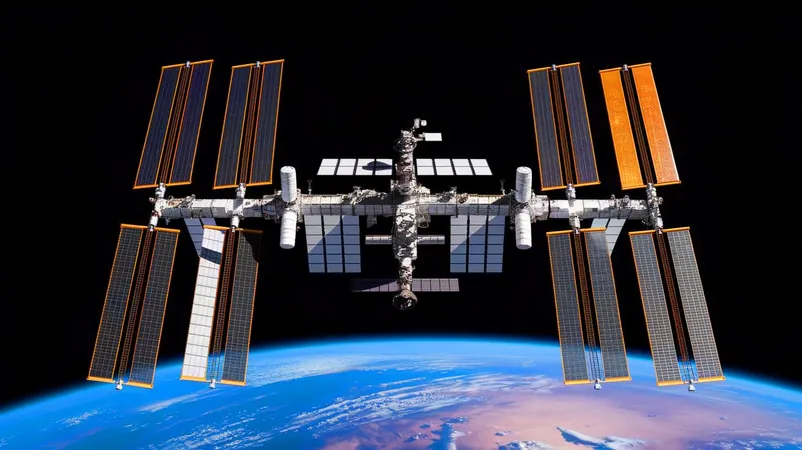
Did Earth’s First Continents Emerge from Cosmic Turmoil? Groundbreaking Study Reveals Early Crust Formation Secrets!
2025-04-06
Author: Wei
Unveiling the Mysteries of the Hadean Crust
Led by Professor Emeritus Simon Turner from Macquarie University, the study highlights that the planet’s initial solid surface—termed the protocrust—formed with chemical signatures analogous to contemporary continental rocks. Utilizing advanced simulations that mimic the extreme molten conditions of early Earth, when the planet was enshrouded by a global magma ocean, researchers were able to track the unique chemical evolution occurring at that time.
Turner states, “For years, scientists believed that tectonic plates had to interact to produce the chemical fingerprints found in continents. Our findings suggest that this fingerprint was already present in the earliest crust, indicating that we must rethink existing theories.”
The Niobium Enigma: A Game-Changer in Understanding Tectonics
A particularly striking insight from the study pertains to niobium, a rare metallic element that is typically found in lower concentrations in continental rocks. Previously, scientists interpreted this scarcity as strong evidence of subduction zones, areas where tectonic plates slip beneath one another. The researchers challenged this long-standing interpretation by modeling Earth's interior during the Hadean eon, discovering that niobium, due to its siderophilic nature, would have naturally gravitated towards the core—without the necessity of subduction.
This natural behavior may shed light on why nearly all continental rocks, irrespective of their geological age, exhibit this same niobium anomaly. As Turner reflects, “There seems to be a link between the early formation of Earth’s core and the common negative niobium signatures observed in continental crust.”
How Cosmic Forces Shaped Earth’s First Continents
While tectonic activity might not have initially driven the emergence of Earth's first continents, the study posits that a dynamic interplay of cosmic forces—including meteorite impacts, crustal peeling, and nascent plate movements—contributed to enriching the early crust with silica and shaping thicker continental fragments.
Turner explains, “Our research indicates that the unique chemical signatures intrinsic to continental crust were established during Earth’s nascent period, independent of tectonic activity.” The findings suggest that prolonged meteor impacts eventually induced intermittent subduction-like activities until around 3.8 billion years ago when celestial bombardment lessened, giving way to stable and self-sustaining plate tectonics.
Revolutionizing Our Understanding of Planetary Geology
This fresh perspective is poised to transform how scientists study Earth's geological history and the development of other rocky planets. By re-evaluating the formation of Earth’s early crust, researchers may apply these insights to comprehend planetary evolution on a broader cosmic stage.
“This discovery radically changes how we understand Earth’s ancient geological processes. It provides a novel framework for considering how other rocky planets might develop similar features across the universe,” Turner elaborated.
This landmark study not only challenges conventional wisdom surrounding Earth’s formative years but also opens an exciting pathway for exploring the geological histories of distant planets, hinting at the possibility that they too may feature continents formed under similar cosmic forces. Prepare for a new era in planetary geology!



 Brasil (PT)
Brasil (PT)
 Canada (EN)
Canada (EN)
 Chile (ES)
Chile (ES)
 Česko (CS)
Česko (CS)
 대한민국 (KO)
대한민국 (KO)
 España (ES)
España (ES)
 France (FR)
France (FR)
 Hong Kong (EN)
Hong Kong (EN)
 Italia (IT)
Italia (IT)
 日本 (JA)
日本 (JA)
 Magyarország (HU)
Magyarország (HU)
 Norge (NO)
Norge (NO)
 Polska (PL)
Polska (PL)
 Schweiz (DE)
Schweiz (DE)
 Singapore (EN)
Singapore (EN)
 Sverige (SV)
Sverige (SV)
 Suomi (FI)
Suomi (FI)
 Türkiye (TR)
Türkiye (TR)
 الإمارات العربية المتحدة (AR)
الإمارات العربية المتحدة (AR)